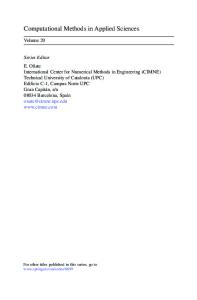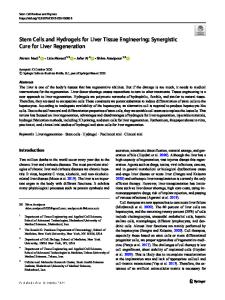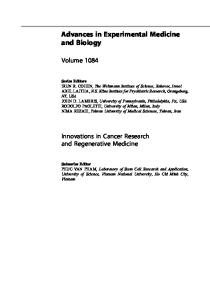Tissue engineering toward organ-specific regeneration and disease modeling
- PDF / 1,133,289 Bytes
- 16 Pages / 612 x 792 pts (letter) Page_size
- 104 Downloads / 302 Views
Biomaterials for 3D Cell Biology Prospective Article
Tissue engineering toward organ-specific regeneration and disease modeling Christian Mandrycky, Kiet Phong, and Ying Zheng, Departments of Bioengineering, Institute for Stem Cell and Regenerative Medicine, University of Washington, Seattle, WA, USA Address all correspondence to Ying Zheng at [email protected] (Received 24 April 2017; accepted 17 July 2017)
Abstract Tissue engineering has been recognized as a translational approach to replace damaged tissue or whole organs. Engineering tissue, however, faces an outstanding knowledge gap in the challenge to fully recapitulate complex organ-specific features. Major components, such as cells, matrix, and architecture, must each be carefully controlled to engineer tissue-specific structure and function that mimics what is found in vivo. Here we review different methods to engineer tissue, and discuss critical challenges in recapitulating the unique features and functional units in four major organs—the kidney, liver, heart, and lung, which are also the top four candidates for organ transplantation in the USA. We highlight advances in tissue engineering approaches to enable the regeneration of complex tissue and organ substitutes, and provide tissue-specific models for drug testing and disease modeling. We discuss the current challenges and future perspectives toward engineering human tissue models.
Tissue engineering has emerged as a promising approach with two major goals: (1) to develop tissue and organ substitutes for clinical transplantation to replace damaged regions and restore organ function and (2) to build human tissue chips and replace animal models for drug screening and disease modeling. To date, multiple levels of complexity have been achieved with existing technologies to precisely position cells at scales from the single cell to whole tissue-level architectures. Clinical success has been achieved in simple flat tissue transplantation, such as skin and bladder,[1,2] which contain few cell types and require simpler engineering designs. Multiple human organs-on-a-chip have been actively developed for the study of drug response and pharmaceutical kinetics.[3–7] Engineering complex metabolically-demanding tissues, however, requires higher-order organization across interacting functional compartments (e.g., parenchyma and vasculature; cells, and matrix), at molecular, cellular and tissue scales, in addition to adequate mass to generate physiological tissue function.[8,9] Each organ varies in its unique structural components— namely different cell types, matrix, and architecture among them, biophysical environment—pressure and flow, and biochemical stimuli—oxygen tension, cytokines, and growth factors, to support the specific organ function. In this review, we discuss the unique features and critical engineering challenges to tissue engineering in four major organs, focusing on the organs that top the organ transplant waiting list in the USA: the kidney, the liver, the heart, and the lung.[10,11] We will review advance
Data Loading...











